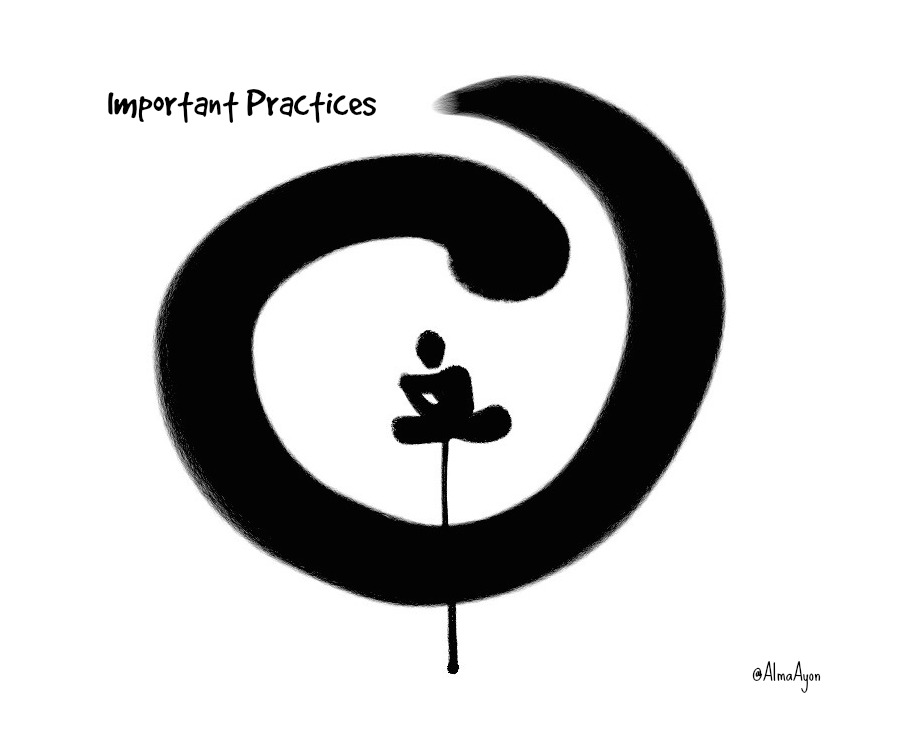by Alma Ayon | Aug 20, 2017 | attention, meditations
Remember what you did last Monday. Do you remember what you ate? The clothes you wore, the people you met, the things you said?
Does it take a little work to remember? Perhaps it is because we constantly receive so much information and when we want to concentrate on what happens in the present there are so many distractions!
Our attention jumps from side to side, trying to multi-function on various tasks. When we decide to focus on a thing we can stay focused 3 to 10 seconds, before our mind begins to distract ourselves with thoughts, after 10 minutes of performing an activity, there is something that interrupts the flow of our attention and distracts us.
There are two practices in which we want to train our mind, the first is mental presence, through which we have an open attention to all the senses, aware of everything that is happening at the moment, without focusing on one thing in particular, but without leaving unnoticed something that is happening in the present.
The second practice is focused attention, we choose to focus and concentrate on something that is happening or we are doing in the present. We leave everything else in the periphery of our attention and as we concentrate more, we enter the state of flux where we no longer notice anything other than our object of attention. We lose track of time and what surrounds us. When we are so concentrated, joy arises and we enjoy what we are doing. But many times when we concentrate we become tense, so it is important to be aware of our body and mind and learn to relax them.
Both practices require mindfulness which is the ability to pay attention but also to remember to bring our attention back to the object.
The first thing to do is to recognize what it is important for us, and to give our attention to it, we need stop wasting our time by attending to thoughts and fantasies that have no relevance to our goals, and to focus here and now on what is truly important.
As we train more and more our attention, we become more efficient and we are able to make progress in what is important, so it is important to strengthen our attention through constant practice.
I recommend the following articles to continue learning about the training of this wonderful faculty of care:
Transform your mind
How to focus on your goals
***
Share your experience with these practices in the comments section below!
by Alma Ayon | Oct 9, 2016 | meditations, videos
Our mind is like a waterfall, if we learn to relax in the present we can see it more clearly. That's meditation.
by Alma Ayon | Feb 15, 2016 | emotions, meditations
When you feel rejected, assaulted, alone, depressed, angry; you are creating separation from the world, you disagree with it, you are judging it. The best thing to do is accept this moment and be fully aware of the emotion you're experiencing, without rejecting it, but without feeding it with more thoughts, watching the thoughts that arise involuntarily and let them pass, stay present and rest on the awareness of being aware, of being alive, of being experiencing. Let your mind be as motionless sky and let your thoughts and emotions arise and pass like clouds. Do not fight, do not reject the experience, do not act. Stand still watching your mind, go for a walk alone and coordinate your steps with your breath while you attend to emotions and sensations in your body.
Do not analyze the triggers of your emotion until it has diminished or gone altogether.
by Alma Ayon | Feb 11, 2016 | meditations
To help you design a daily practice you can follow this guide.
A formal training session:
Motivation. Start by defining our intention to train our mind.
Divide your session into 3 parts:
1 practice for emotional balance: Compassion, Loving Kindness, Empathy or Equanimity.
1 practice for concentration
1 application of mindfulness
Resting the mind.
Dedication or aspiration
In daily life:
1 ethical practice. Volunteering, generosity, patience, etc.
4 immeasurables (Compassion, Loving Kindness, Empathy and Equanimity), choose the right one and direct it towards every person with whom you interact.
1 Application of mindfulness as we work and do our daily activities.
In the evening do another formal session and a recollection of your actions during the day.
Close with a positive aspiration for the next day.
by Alma Ayon | Jan 9, 2016 | meditations
I'm happy to share with you this wonderful meditation:
Sit with your legs crossed. Generate the motivation to devote a few minutes to cultivate loving kindness toward yourself.
Take 3 deep breaths, releasing any tension or anxiety in your body and mind.
Let your breath in its natural rhythm, uncontrolled, only attending closely.
After 5 minutes of mindfulness of breathing, visualize that with each inhalation, from all directions in space you get rays of light bringing you all the welfare, health and happiness you want .
Visualize yourself also receiving material goods, talents and opportunities you'd like to have. And now also visualize that you transform your faults into qualities.
Transform yourself into the person you want to be and visualize how others perceive you in that way.
Now focus on the exhalation and with each send light rays from your body towards all beings without exception, sharing with them your qualities, talents, material goods and feelings of kindness , compassion, love , generosity, patience and wisdom. Do this for 10 to 15 minutes.
Now release all visualization and all thinking and let your conscience rest in its natural state for a few minutes.
Finish your session with the aspiration that you can transform your limitations into opportunities that you can benefit those beings around you.
Your Turn
How was your meditation? Do you have any question?
by Alma Ayon | Jan 9, 2016 | meditations, reflections
The position that I recommend for working and meditating is to sit on a cushion of about 10-15 cm high, commonly called zafu, you can also use a yoga brick, on a cushioned mat about 1mt x 1mt commonly called zabuton, or you can also put a folded yoga mat under the cushion.

Sitting Posture
Sitting cross-legged with each leg facing each other and resting on the ground. Hands on your thighs or left hand on top of the right hand with both palms up and the tips of the thumbs touching gently. Back straight, this is very important! and head aligned. The tip of the tongue behind the upper teeth. Eyes open and relaxed eyelids. This position helps you keep stability, upright but relaxed, so you can stay for long sitting in this way. If you feel sleepy or your mind is very fast you will notice it on your thumbs, in your eyes and in your spine. Try to correct your posture as soon as you notice that it is out of balance.

The Place
Find a quiet room or a place where you have no distractions or noise. Sit preferably in front of a white wall, since the objects and designs stimulate the mind and distract us.
Your goal is that your body and mind are still, as relaxed as if asleep, but really awake and alert at a time.
When we spend hours on the computer, sitting in a chair this hurts our body, so it's good if you can adopt the half-lotus posture just described, also for working.
If your knees hurt and you rather sit on a chair, it is important to keep your back very straight.
Other Postures
Another position for both work and to meditate is to stand with a very straight back and head in line. It's good to switch between this position and the half-lotus posture.
Finally there is the savasana pose, which involves lying down on your back on a yoga mat with your arms resting at your sides. You can put a small pillow under your head if it helps you align your spine. This position is excellent for relaxation and meditation, but it is not good to work! You also run the risk of falling asleep, so it is good to use it only when you're stressed or when you have tension in the body.

What posture do you find most comfortable to meditate and work with? How long can you stay in that position without moving?




